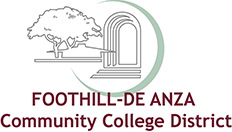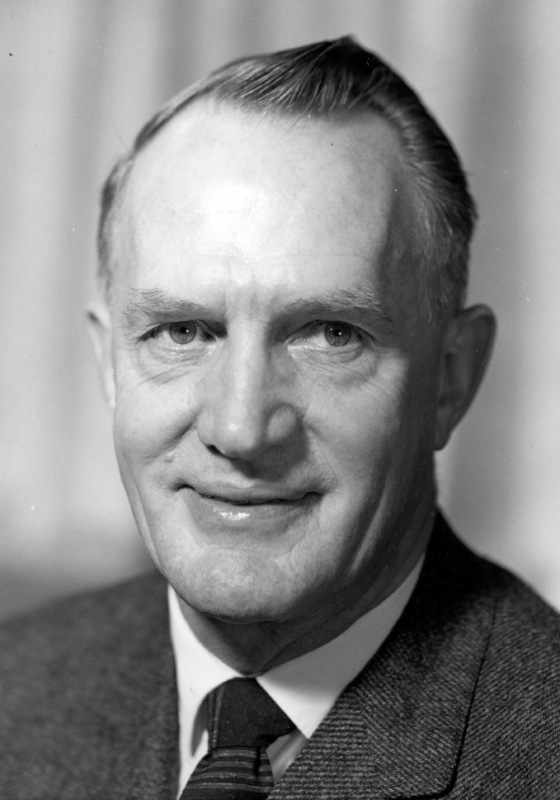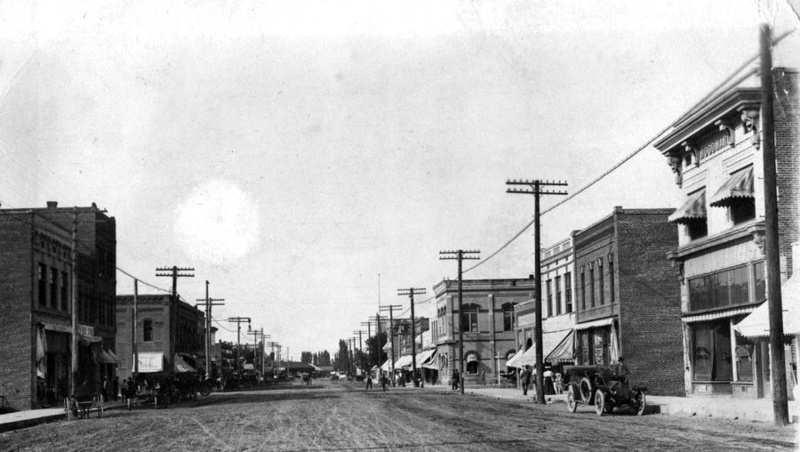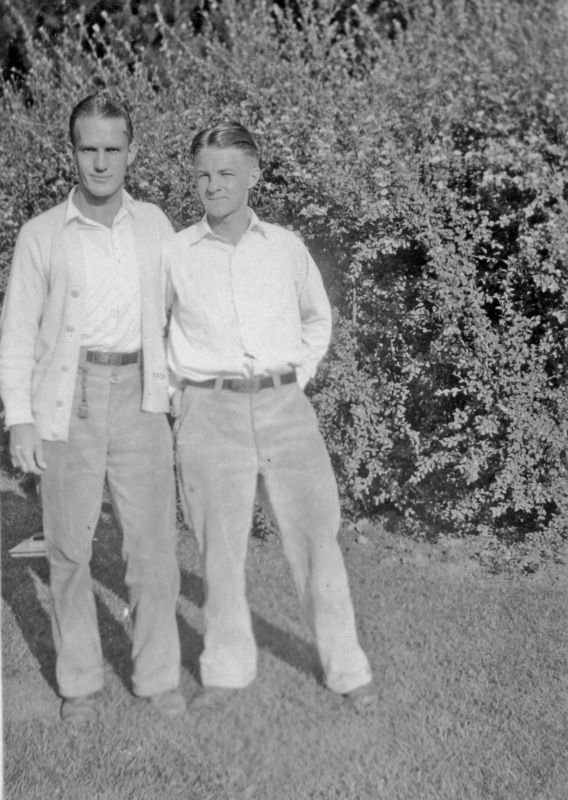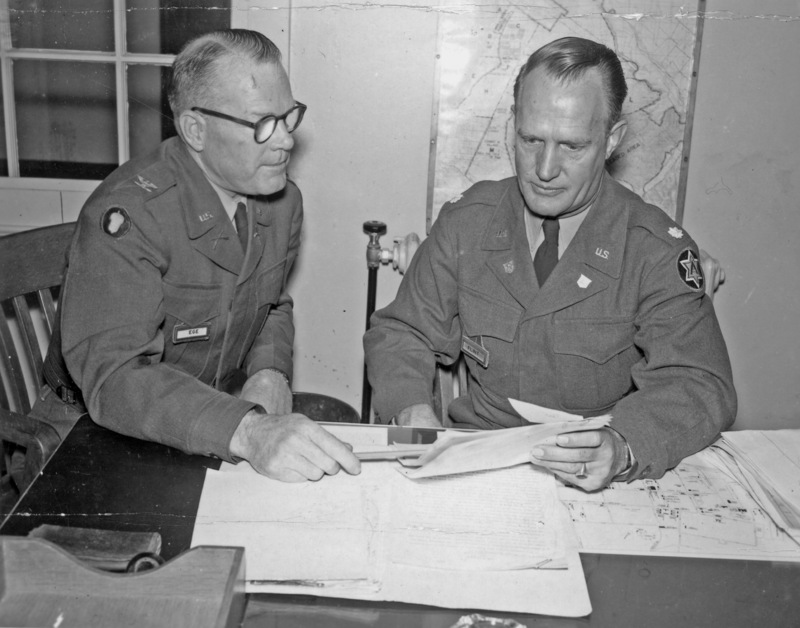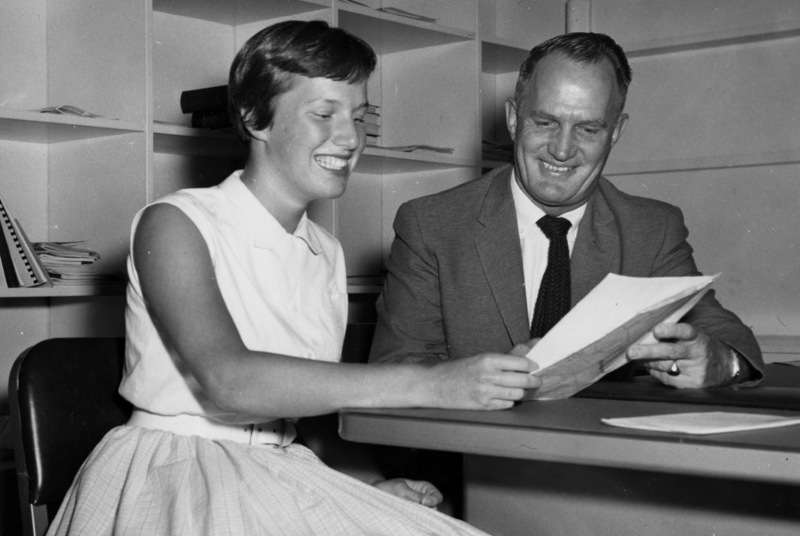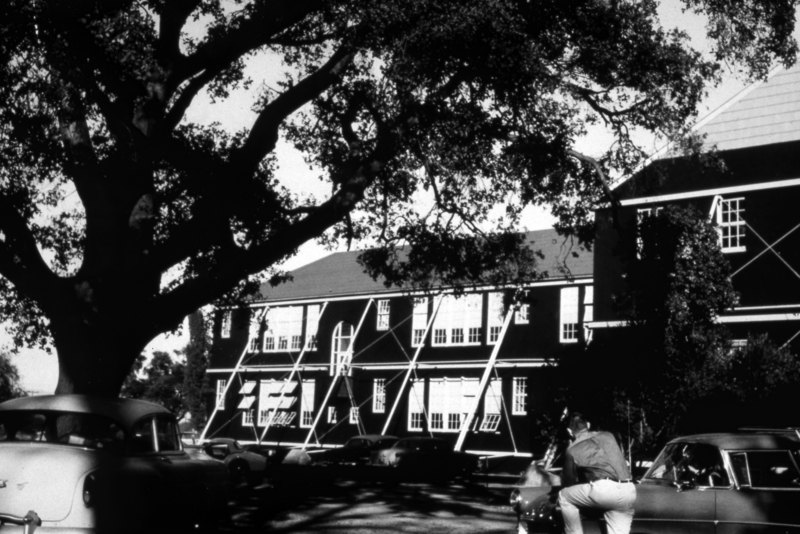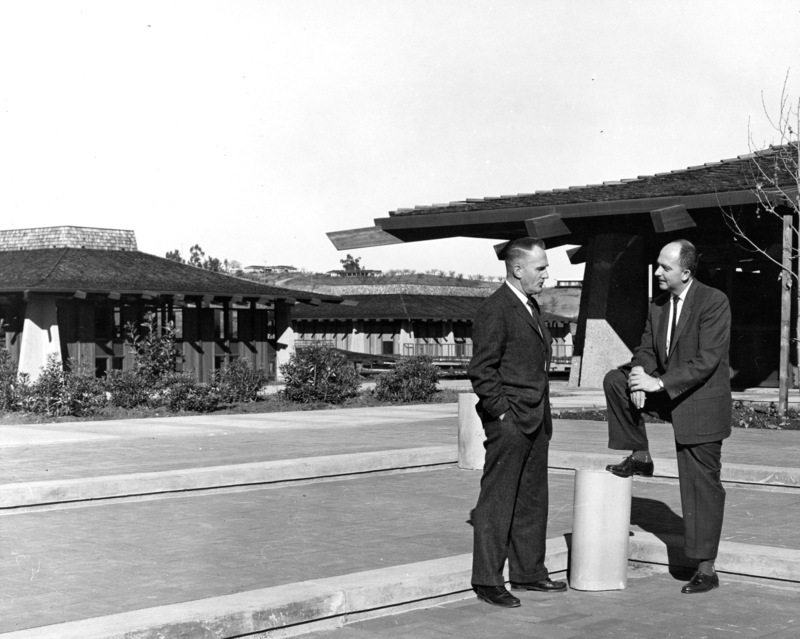Dr. Calvin C. Flint
Dr. Calvin Charles Flint was hired in 1958 by the first Board of Trustees to be the president of Foothill College and the district superintendent with responsibility for overseeing the design and construction of Foothill College. He went on to supervise the construction of De Anza College as well. Flint remained district superintendent until 1971. The Palo Alto Times said, upon his death in 1973, “More than any other person, he shaped the Foothill district into a community college masterwork.”
Calvin Flint was born in Payette, Idaho, on May 5, 1906. He attended local schools and, after completing high school, spent six years as an able-bodied seaman. It was hard work, but Cal Flint was never afraid of hard work. In fact, during his years as a seaman (1925-1931) he worked one summer as a camp attendant at Yellowstone National Park and another summer as a derrick rigger for Shell Oil. During this same period, he attended Stanford University and received his bachelor's degree in history in 1928. This was followed by a master's degree in history in 1931, also from Stanford. Over the course of his early life, he studied at Occidental College (history), the London School of Economics (political science), the University of Southern California (education) and at Sorbonne, Paris (political science.) He later returned to Stanford to earn his doctorate in education in 1952. He clearly had a passion for education, which later fueled his many accomplishments as a college administrator.
In 1931 he performed his first duties in higher education as an instructor and a dean at Moran Junior College in Atascadero, California.
Cal Flint had already developed a bit of “wanderlust” and his next position in higher education was in 1933 at Robert College in Istanbul, Turkey. This was quickly followed by a position as the dean of men at Santa Ana Junior College in Southern California. Santa Ana Junior College had been mostly destroyed by an earthquake in 1933 and Cal Flint was assigned the task of supervising the reconstruction of the entire college, the first of four colleges he would build during his career. He continued as a dean at Santa Ana Junior College until 1942 when he entered the Army Air Force, eventually reaching the rank of lieutenant colonel. He continued to serve in the Army Reserve for many years after WWII. He even had a brief experience running his own contracting company, Moyer and Flint, from 1946-1947. This construction experience, along with his experience in higher education, would help make him uniquely qualified to later supervise the design and construction of Foothill and De Anza colleges.
In 1947, he was hired as president of Monterey Peninsula College in Monterey, California. Since the college did not yet have a permanent location, the courses were taught at Monterey High School. College courses were offered from 4-10 p.m., after the high school classes had ended for the day. This same year, Flint and Monterey Peninsula College arranged for the purchase of ninety-seven acres of land fronting Fremont Street, where they planned to build their permanent campus. The following September, classes were offered in converted barracks buildings on the newly purchased land. Construction of permanent buildings began soon after. Cal Flint stayed on as president of Monterey Peninsula College until, in 1958, the Board of Trustees of the Foothill Junior College District (now called the Foothill-De Anza Community College District) began the search for a president and superintendent of the newly formed district. The board’s plan was to hire the right person, quickly build the first college, then the second, and eventually a third. The third full size college, which was planned for Mountain View or Sunnyvale, never materialized, but the district did eventually open the Foothill College Sunnyvale Education Center in 2016.
Many highly qualified applicants were considered, including Hubert H. Semans, who had worked on California's Master Plan for Higher Education for the state Department of Education. Semans did not get the job but Flint later hired him as dean of instruction and, in 1965, Semans became Foothill's second president, succeeding Flint. Hubert Semans name now graces the entrance to Foothill’s Semans Library.
Based on his experience with college administration and with college construction, Cal Flint was selected by the Board to be the first college president and to supervise the design and construction of the district’s colleges. At this point in his career, not only did Cal Flint have experience in administration and construction, but he was also fully qualified to teach in the following subjects: history, political science, economics, physical education, speech, and both Spanish and French languages. Dr. Flint was quite a formidable educator.
When he began his new job in March of 1958, no one expected to enroll any students until 1961, when the new Foothill College campus in Los Altos Hills would be completed. No one, that is, except Cal Flint. By fall of 1958, he had purchased the Highway School, and old shuttered elementary school in Mountain View and updated it for safety; hired faculty and administrators; supervised the development of curriculum and a course catalog; and enrolled 600 students for the first Foothill College classes. All of this was completed in the span of six months. During his time at this temporary location, he officially changed the name of Foothill Junior College to Foothill College. When he was asked why he made this change, his answer was always the same: “Foothill College is junior to no one.” His plan was the have the best faculty, the finest facilities, and the most rigorous curriculum of any community college in the system. This plan was evident in his selection of the first group of faculty. Cal Flint and his close colleague and dean of students, A. Robert DeHart, traveled around the county, personally interviewing promising candidates. Nearly 25% of the original faculty had doctoral degrees, which was practically unheard of in junior colleges system at that time.
In March of 1959, only seven months after the opening of the temporary site of Foothill College in Mountain View, Flint was appointed to the Joint Advisory Committee for California Public Higher Education. This committee would advise the University Regents and the State Board of Education in determining where new colleges would be built, how they would be financed and formulating policy on the overall responsibilities of higher education in California. In 1959 Flint was appointed to the Western College Association, later called WASC (Western Association of Schools and Colleges.) Within two weeks, the team visited U.C. Berkeley for an accreditation review. Flint was the only junior college representative on the team. He would eventually serve as the president of WASC for the 1969-1970 academic year.
From 1958 through 1961, Cal Flint managed the operation of the temporary campus in Mountain View while simultaneously supervising the design of the first permanent district campus in Los Altos Hills. Before the permanent Foothill campus in Los Altos Hills opened in 1961, the district purchased 114 acres of land for the second college in nearby Cupertino. This level of energy and activity was a constant in Cal Flint’s career. He was a dynamo, regularly swimming a mile each morning before going to work at his office.
Foothill College opened at its Los Altos Hills location in Fall of 1961 to great acclaim from educators, students, and the public. The publicity generated by the opening of Foothill College created a demand for Dr. Flint as a guest speaker, and for interviews about his thoughts on community colleges and higher education. One of those intervews, recorded for later radio broadcast, can be heard by clinking on this link.
The district's second college, De Anza, opened to similar acclaim a few short years later, in 1967. With two colleges completed and growing in enrollment every year, one might think it was time to relax a little bit. But Cal Flint was never satisfied with the status quo.
In 1968 Flint led a grant-funded research study about educational opportunities for students of color, foreshadowing the district’s ongoing commitment to inclusion and equity. He noted that the district should have about 1,000 Latinx students (then referred to as Mexican-American or Chicano), based on ethnic ratios of the general population of the district’s service area. At that time, the district had only 187 Latinx students enrolled. Flint then proposed several changes to support the educational success of local Latinx students: Spanish speaking counselors would be sent to local high schools for recruitment, bilingual English/Spanish courses would be offered, and a satellite campus in Mountain View or Sunnyvale would be developed for the convenience of the local population. Flint was quoted as saying that one needs to “take education to where you find people.”
That same year, Flint also supported the creation of a course called Guidance 54, designed to meet the needs of women who had interrupted their education for family or job responsibilities.
In late 1970, at age 64, Cal Flint sent a letter to the Board of Trustees, asking that they release him from his contract early, so that he could retire. Flint and his wife wanted to travel, and the demands of the district simply would not allow the time he needed. The Board reluctantly granted his request.
Upon his retirement, he gave credit for the district’s success to everyone except himself. He described classified, non-teaching staff as “a pillar of strength that makes it possible for the district to have the success it enjoys.”
In 1971, The Sentinel, the Foothill College newspaper, devoted a cover story to him.
Sadly, his retirement was short, and he did not have the time he wanted to complete his world travels. Calvin Charles Flint died from an unspecified form of cancer in 1973 at the age of 66.
His influence and his philosophies are still embedded in the fabric of both colleges, as stated the original district motto: Educational Opportunity for All.
Following are just a few quotes about the performance, energy and impact of Dr. Calvin Charles Flint:
“He dresses like the Pat Boone of college presidents, cautions interviewers that he doesn’t seek publicity, and expects high standards of his students.”
Palo Alto Times, June 14, 1962
“Cal (Flint) is probably one of the most outstanding educators in California today – and I’m not limiting that to community colleges.”
Sidney Brossman, Chancellor, California Community Colleges, 1971
“Calvin C. Flint, the genial Foothill College President whose innate optimism is positively unquenchable.”
Ken Harvey, columnist, 1961
“No one else has had such a profound influence as he had here, nationally and even abroad on the junior college movement.”
Robert C. Smithwick, Member, Board of Trustees, 1973
“Some have called ‘service to others’ the rent we pay for the space we occupy. Would that we all could pay the rent that Cal Flint did.”
John W. Dunn, Foothill-De Anza District Superintendent, 1973
“It is hard to imagine that energy stilled by his death from cancer at age 66. Indeed, it is much easier to think that he had bequeathed that energy to the Foothill District earlier, and that this imparted force will go on, like molecules in merry motion, for a long time to come.”
Palo Alto Times, March 13, 1973 (Upon the announcement of his death)
To browse photos and documents related to Calvin C. Flint, click here.
Written by Marty Kahn, FHDA District Archivist, 2019
